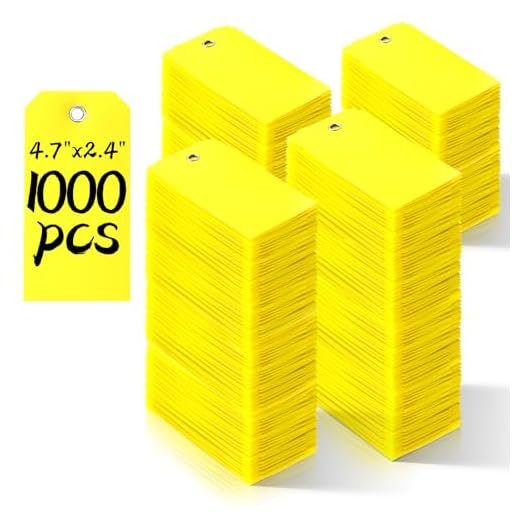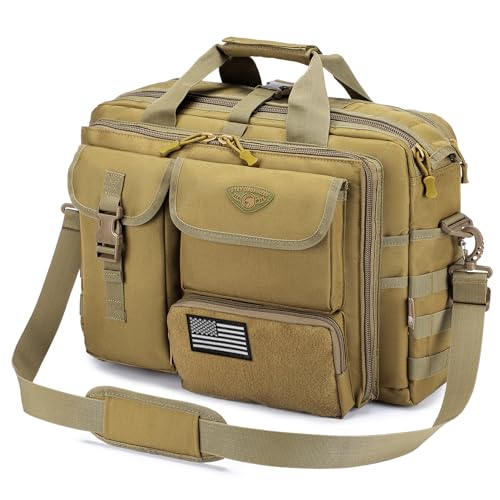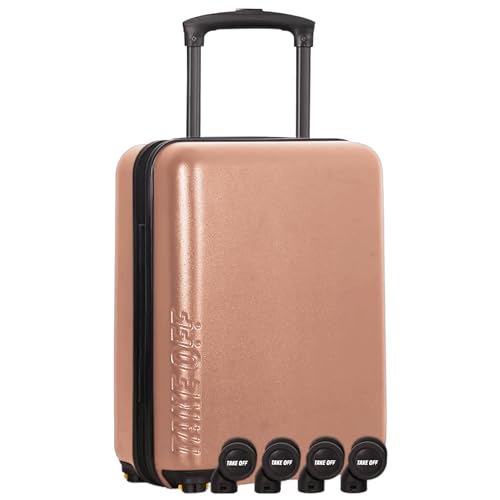



Quick answer: most auto transport providers permit a modest quantity of personal items inside the cabin or trunk when pre-approved; typical allowance is 45 kg (100 lb) total for open trailers and commonly up to 90 kg (200 lb) for enclosed carriers, but exact limits must be confirmed in writing. Excess mass usually triggers a surcharge of $50–$200 or refusal to load; many contracts exclude coverage for onboard personal effects unless those items are specifically declared on the bill of lading.
Prepare an itemized inventory including serial numbers and approximate values, plus high-resolution photos of the interior and exterior taken at pickup. Remove high-value articles above the provider’s undeclared limit (frequently items over $1,000), firearms, perishables and hazardous substances. Keep fuel level at or below 25% at handover, leave two key sets in a sealed envelope for the driver, and obtain a written statement from the transport firm that lists accepted personal items on the bill of lading.
Insurance and documentation: standard carrier liability typically covers physical damage to the vehicle caused by the transporter but excludes loss or theft of personal effects unless a separate clause applies. Purchase specific freight or marine cargo insurance that names personal items and states declared value. For international moves, declare all onboard belongings to customs and attach the inventory, receipts and passport copies; undocumented items risk inspection delays, fines or seizure depending on destination rules.
Cost and scheduling impact: normal domestic long-haul rates in the U.S. run approximately $500–$1,500 for open transport and $900–$2,500 for enclosed units over typical 500–1,500 mile hauls; adding onboard personal items commonly produces a risk surcharge of about $50–$200 and may limit carrier options or increase pickup-to-delivery windows. Always obtain at least three written quotes that itemize allowance, surcharges and insurance fees.
Practical checklist: request written approval from the transport firm; document and photograph every item; declare valuables and get notation on the bill of lading; secure loose objects in soft bags and distribute weight low and evenly; buy explicit insurance that names personal effects; confirm fuel level and key handover procedures before the truck arrives.
Transporting a vehicle and personal belongings
Most transport firms permit a limited amount of personal items inside the vehicle during transit; standard allowance ranges from 100 to 200 lb total, so verify the carrier’s exact limit before booking.
Weight and placement rules: open carriers typically allow up to about 100 lb; enclosed carriers sometimes accept 200–300 lb but extra mass may trigger additional fees or refusal. Distribute weight evenly across seats and avoid stacking items above seat height.
Insurance and liability: company cargo coverage usually excludes interior contents. Purchase separate transit insurance for valuables or send them via parcel courier if full protection is required; keep proof of value and receipts.
Forbidden and high-risk items: remove spare fuel containers, propane, aerosol cans, explosives, perishable food, live plants, and loose lithium batteries. Firearms and prescription medicines require specific declarations and may be prohibited by the carrier or destination regulations.
Documentation and pre-transfer checks: photograph the interior and exterior, record odometer reading and VIN, note fuel level (carriers commonly request under 1/4 tank), and provide a detailed inventory of personal items inside the vehicle.
International moves: customs authorities often count interior belongings toward dutyable goods. Prepare an itemized declaration and original invoices for high-value items; expect possible inspections and clearance delays.
Practical security steps: remove toll tags and dash-mounted trackers, disable alarms, provide two key sets to the transporter, lock glove compartments only if items are listed on the inventory, and label loose bags so handlers can identify owner items quickly.
Cost comparison tip: obtain quotes for transporting the vehicle with belongings versus shipping personal effects separately by freight or parcel service – sometimes separate transit is cheaper and offers better claims protection for valuable goods.
Auto transport companies permitting personal belongings inside vehicles
Pick a broker or carrier that explicitly permits secured personal belongings inside an enclosed carrier and provides written carrier confirmation, an itemized inventory requirement and declared-value limits before pickup.
Major brokerages that commonly permit limited interior items include Montway, AmeriFreight and Sherpa Auto Transport; allowance depends on the individual carrier partner and on whether the move uses an enclosed or open trailer, so obtain carrier-level policy in writing.
Marketplace platforms such as uShip connect customers to independent drivers; acceptance of personal effects varies by provider on a per-listing basis, so confirm acceptance on the booking page and require a signed Bill of Lading listing each item.
Full-service household movers (Allied, North American, Bekins and similar firms) that offer vehicle transit as part of a household relocation routinely accept listed household goods inside trunks or cabins, but pricing and liability are governed by moving-company terms rather than standard auto hauler policies.
Common carrier policy items to verify in writing: total weight allowance (often a set limit), requirement that items be secured and non‑protruding, fuel level restrictions (typically under 25%), prohibition of spare fuel, batteries, propane, tools that could shift, firearms or hazardous materials, per-item and total declared-value caps, and any extra-item fees.
Practical requirements to enforce at pickup: create and sign an addendum to the Bill of Lading listing each interior item, photograph the vehicle interior and exterior, remove small valuables and the spare key from the cabin, ensure all items are fastened or boxed, and confirm carrier insurance limits and whether supplemental coverage is needed.
If the selected carrier refuses interior items, transfer contents via a local courier or moving company and retain receipts; weigh that separate cost against any carrier surcharge for interior belongings before finalizing the booking.
What items are prohibited or restricted inside a transported vehicle?
Remove hazardous, pressurized, flammable, perishable and high-value items before pickup; carriers can refuse carriage, charge disposal fees or require written declarations.
Flammables, explosives and gases
Examples: gasoline in portable cans, kerosene, diesel jerrycans, propane/LP tanks, fireworks, ammunition classified as explosive–do not leave these inside. Recommended actions: drain the fuel tank to 25% or less for road transport; remove all portable fuel containers and any compressed-gas cylinders. Do not place aerosols, paint thinners, solvent containers or aerosol cans inside the cabin or trunk.
Batteries, chemicals, perishables and valuables
Batteries: remove spare lithium-ion packs (power banks, extra phone/laptop batteries), e-bike/mobility scooter batteries and any loose rechargeable packs–carry them separately. Installed starter batteries are generally permitted but must be secured and free of leaks; tape terminals if necessary. Electric/hybrid high-voltage packs: notify the transporter in writing and follow their state-of-charge and safety requirements (many providers request ~30% SOC and deactivated wake features).
Chemicals: paints, pesticides, pool chemicals, bleach, acids and other corrosives are prohibited. Perishables and live plants/animals must be removed. Valuables–cash, jewelry, passports, deeds, irreplaceable documents–should always travel with the owner, not inside the vehicle.
Firearms and ammunition: most carriers prohibit them or allow only under strict, declared conditions (unloaded, locked, separate from ammunition); always check carrier and state rules and remove when possible. Pressure vessels (SCUBA tanks, medical oxygen), hazardous medical waste and illegal substances are not permitted.
Practical steps: create a signed inventory and take timestamped photos of the interior before pickup; disclose any borderline items in writing to the carrier; expect possible removal/disposal charges for undisclosed prohibited goods. Consult the chosen transporter’s written policy and 49 CFR hazmat guidance when handling regulated materials.
How to secure and label personal items left inside a vehicle
Secure all personal bags inside the vehicle’s locked trunk or an anchored cargo area; use two ratchet straps per large suitcase rated at least 500 lb (227 kg) each.
Fasten straps to factory tie-downs or seat-mount points; avoid attaching to airbags, seat belts, or interior trim panels that could tear or deform.
Place heavy pieces as low as possible and against the rear seat backs; distribute weight evenly left-to-right to prevent sagging or tilting during transit; keep single-item weight under 50 lb (23 kg) when feasible to ease handling.
Label each piece externally and internally: apply a waterproof tag showing full name, mobile number, destination city/state, and booking reference. Insert a paper copy of the inventory inside every bag and protect external tags using clear packing tape.
Apply numbered tamper-evident seals to zippers and record seal numbers on both the inventory and photographic evidence; take at least five time-stamped photos: each bag, trunk closed, VIN plate, odometer, and overall exterior condition.
Do not leave cash, passports, jewelry, or small electronics inside; retain those valuables personally to avoid loss and claim disputes.
Request that the transporter list all onboard personal items on the bill of lading and sign beside the written inventory; retain both paper and emailed copies for claims or verification.
For guidance on stabilizing a heavy umbrella base inside the trunk, see best way to fill a base for a patio umbrella.
Limit personal items inside the vehicle to 100–200 lb and declare total weight to the carrier
Recommendation: Keep onboard personal effects under 100 lb (45 kg) for standard open transport and under 200 lb (91 kg) for enclosed transport to avoid surcharges or refusal; any amount above 200–500 lb typically triggers a mandatory declaration and extra fees.
Typical weight policies and financial impact
Most transport companies apply a three-tier approach: up to ~100 lb – no extra charge; 100–200 lb – possible small surcharge ($25–$100); above 200 lb – formal declaration plus larger surcharge ($100–$500) or requirement to use freight/household-goods service. Rates vary by carrier, route length, and type of trailer; expect higher fees for enclosed trailers and long-haul routes.
Exceeding permitted payload may also affect fuel surcharges and door-to-door handling fees because the vehicle’s added mass changes trailer-loading plans and axle loads.
How to measure, declare and protect value
Weigh items using a luggage or bathroom scale and total the figure in kilograms and pounds. Find the vehicle curb weight and GVWR on the door jamb label or owner manual, then add the personal-effects weight to estimate loaded gross weight; present that total to the carrier before pickup. Ask the transporter to note declared weight on the Bill of Lading and any rate confirmation.
Personal effects are often excluded or limited under standard transport insurance. Create a written inventory with photos, receipts or appraisals for items over $100. Purchase separate transit or household-goods coverage if declared value exceeds the carrier’s allowed limit; require the insurer’s policy number and coverage limits in writing before handover.
Distribute weight low and centered: place heavier items in the trunk or low on the cargo floor, balance left-to-right, and avoid concentrating mass on one axle. Remove or reduce aftermarket heavy accessories (roof racks, toolboxes) that add to total payload when possible; if removal is impractical, disclose their weight during booking.
Will transport insurance cover personal items left inside a vehicle?
Most carrier liability policies exclude personal effects stored inside a transported vehicle – obtain a declared-value endorsement or a separate transit policy before pickup to secure coverage for belongings.
Policy behavior summary: carrier liability usually covers physical damage to the vehicle itself, not interior contents; some carriers offer limited personal-effects endorsements that cap coverage between about $100 and $1,000; declared-value endorsements and third-party transit insurers provide higher limits but require prior purchase and documented values.
Limits, deductibles and exclusions: typical personal-effects caps range from $0 to $5,000 or more depending on endorsements; common deductibles are $0–$500; exclusions frequently include theft without evidence of forced entry, pre-existing damage, perishable items, hazardous materials and unreported high-value articles.
Documentation and claim steps: inspect interior at pickup and delivery and note exceptions on the Bill of Lading; create a dated inventory with approximate values and serial numbers; take timestamped photos showing items, VIN and odometer; retain original purchase receipts for high-value items; obtain a police report for theft; file the carrier claim and any secondary insurer claim within the policy deadlines (typical notification requirements range from immediate notation on delivery to formal filing within 7–30 days, so verify exact timeframes).
| Policy type | Typical treatment of personal effects | Typical limits | Recommended action |
|---|---|---|---|
| Carrier liability | Usually excludes contents or provides minimal coverage | $0–$1,000 | Remove valuables or request written endorsement on the Bill of Lading |
| Declared-value endorsement | May extend coverage to declared items when purchased in advance | $1,000–$10,000 (policy-dependent) | Purchase before pickup and keep documentation of declared items |
| Third-party transit insurance | Standalone coverage for belongings inside the vehicle | Custom limits | Buy prior to transport; review exclusions and deductibles |
| Homeowner/renter policy | Often excludes items stored inside motor vehicles or limits off-premises coverage | Policy-dependent | Check endorsements; use as secondary coverage only after carrier |
Practical risk-reduction steps: remove irreplaceable or high-value items before handover; photograph interior locking mechanisms and closed doors prior to pickup; log serial numbers and receipts; insist the carrier note any interior damage at pickup and delivery; obtain written confirmation of any declared-value endorsement and insurer contact details to streamline claims.
Primary responsibility usually rests with the carrier; homeowner/renter policies may act as secondary coverage. Confirm primary/secondary roles, limits and deductibles in writing before releasing possession of the vehicle.
What to Expect at Pickup and Delivery When Keeping Personal Items Inside Your Vehicle
Always complete a joint inspection and signed inventory at pickup and delivery: photograph interior and exterior, record odometer and VIN, note fuel percentage, hand over keys only after inspection, and disable alarms prior to driver arrival.
Pickup checklist
- Driver arrival: confirm carrier ID, written pickup window and contact number.
- Pre-inspection items to record: VIN plate, odometer reading, exterior dents/scratches, interior condition, location of personal belongings and any loose objects.
- Photograph set: at least 10 images – four exterior angles, front and rear interiors, trunk/boot, odometer, VIN close-up, any preexisting damage; timestamp on photographs recommended.
- Inventory list: place one paper copy under the vehicle’s sun visor or in the glove box and keep a digital copy on your phone; list each bag/box by brief description and location (e.g., “black duffel – rear passenger floor”).
- Security actions: lock or secure items in trunks/compartments when permitted; small loose items can be stabilized using accessories such as a best luggage travel cup holder to prevent shifting during transit.
- Hazard check: remove open fluids, compressed gas cylinders, batteries that can leak, and any corrosive materials; if tanks or containers were used, clean and dry them – see guidance here: how to clean an acid scrubber tank.
- Paperwork: sign the carrier’s Bill of Lading only after the inspection accurately reflects vehicle condition and personal-item inventory; retain a signed copy before driver departs.
Delivery checklist
- Confirm ETA: expect a delivery window; the driver should call prior to arrival to arrange exact timing and access details.
- Joint re-inspection: compare pre-pickup photographs and inventory against current condition before signing delivery documents.
- Document discrepancies: any new damage or missing items must be photographed and written on the carrier’s delivery receipt before signature; if refusal to sign, request a carrier incident report and note reasons on the delivery paperwork.
- Keys and access: retrieve all keys and test locks, lights, electronics and horn before the driver leaves; confirm alarm is reactivated if desired.
- Dispute timing: file claims or damage reports per carrier terms – most require photographic evidence submitted within 24–48 hours of delivery.
- Final steps: keep all transport documents, photos and the original inventory for at least 60 days to support any follow-up.







